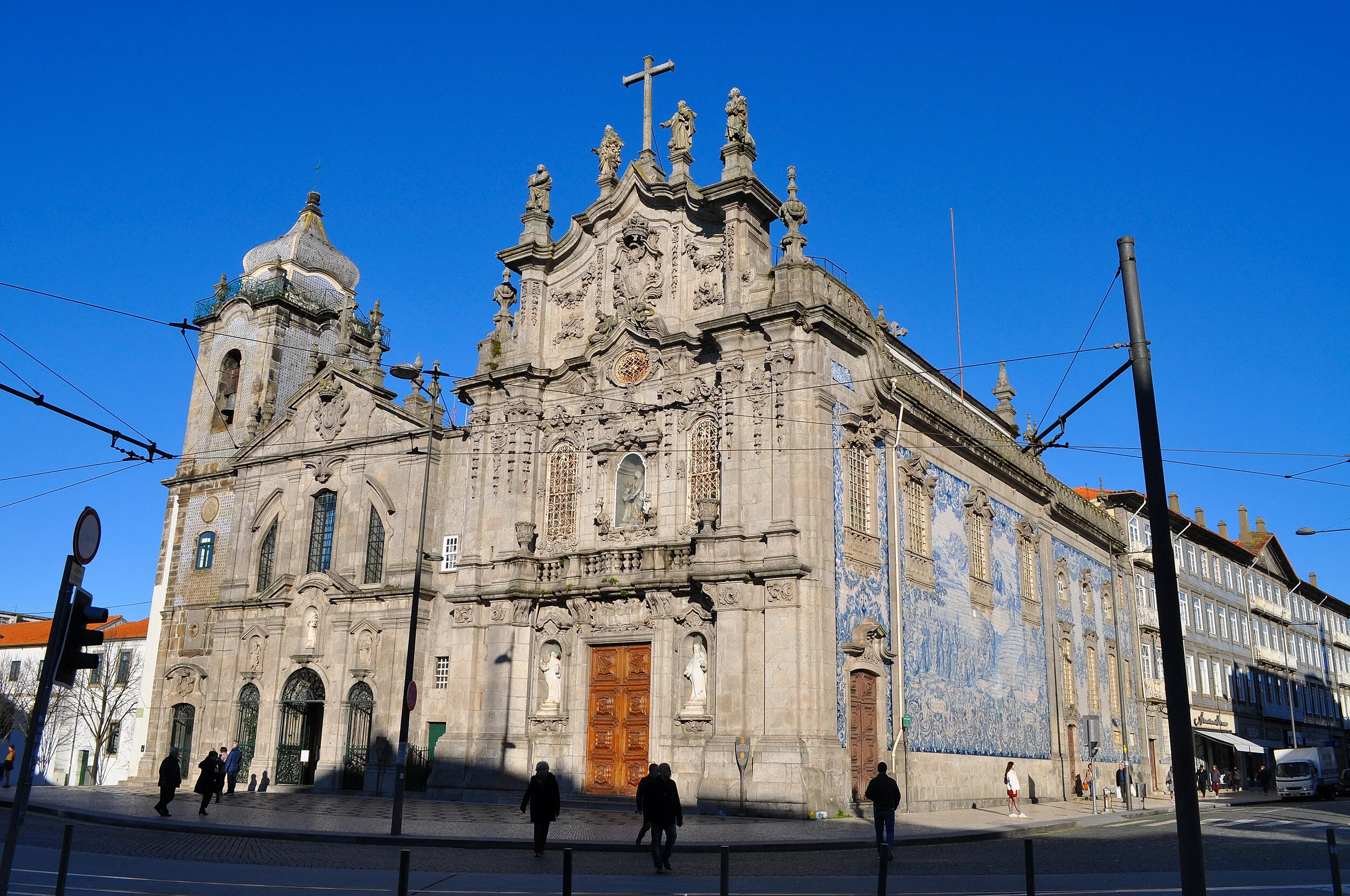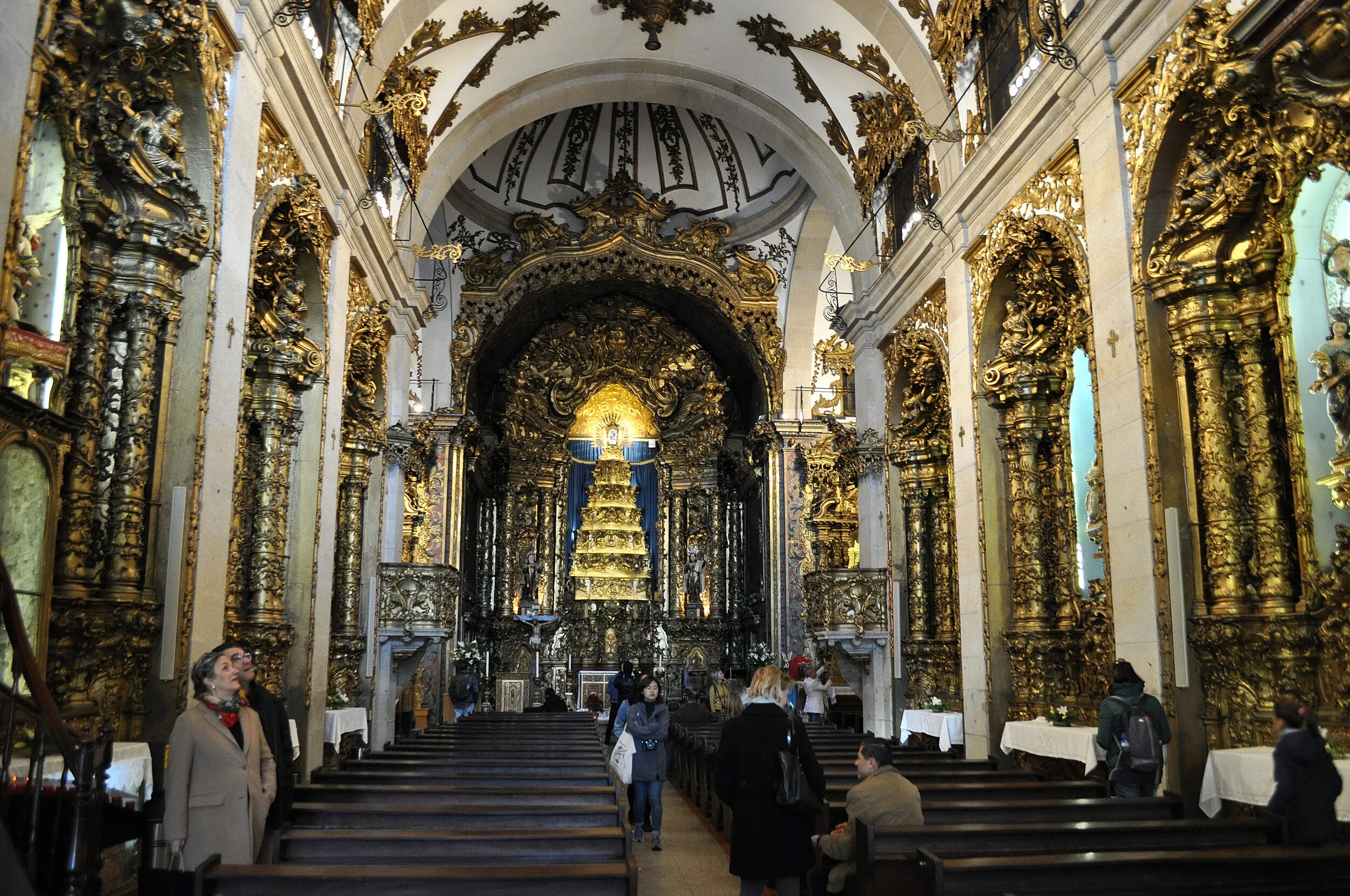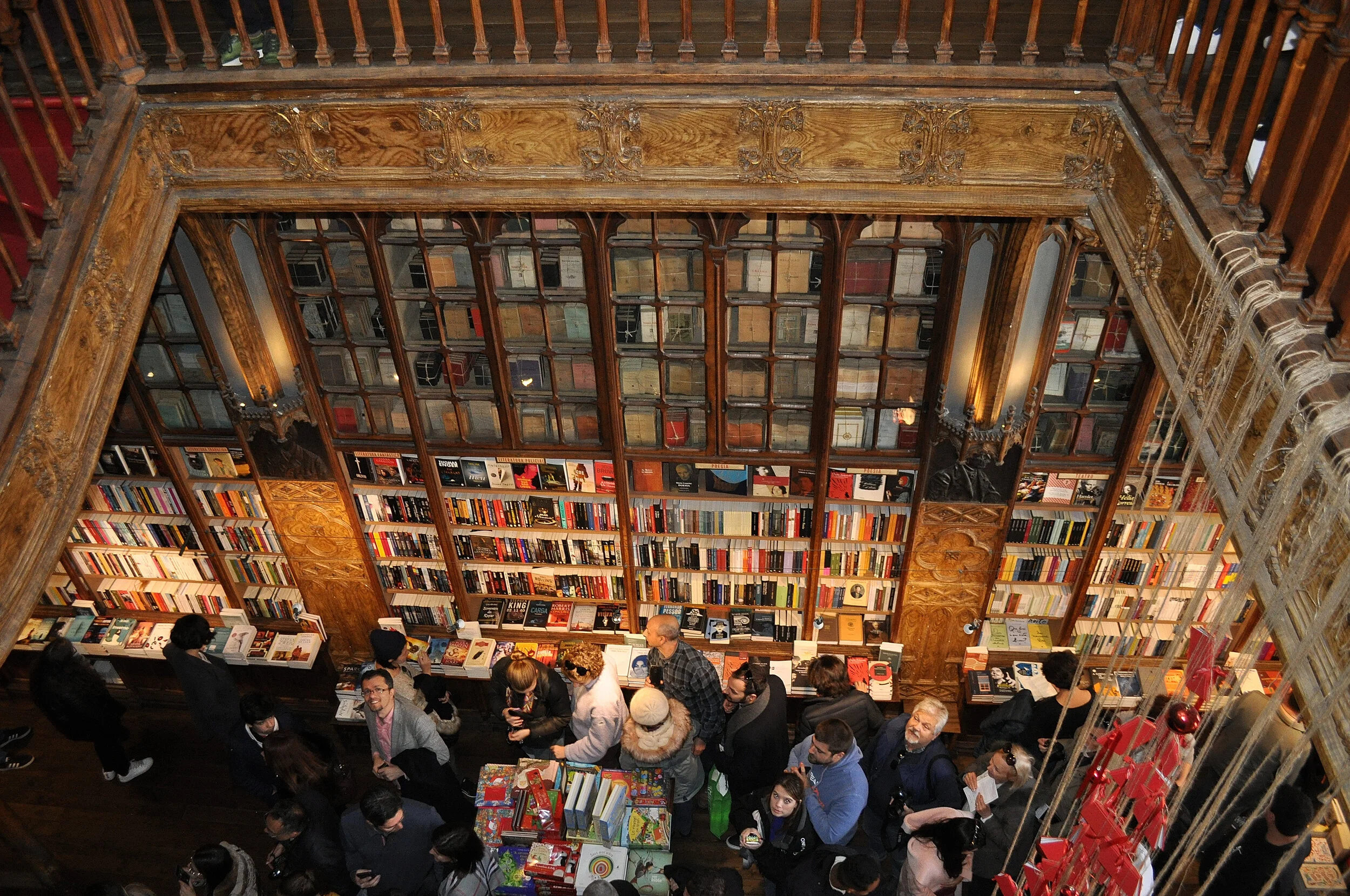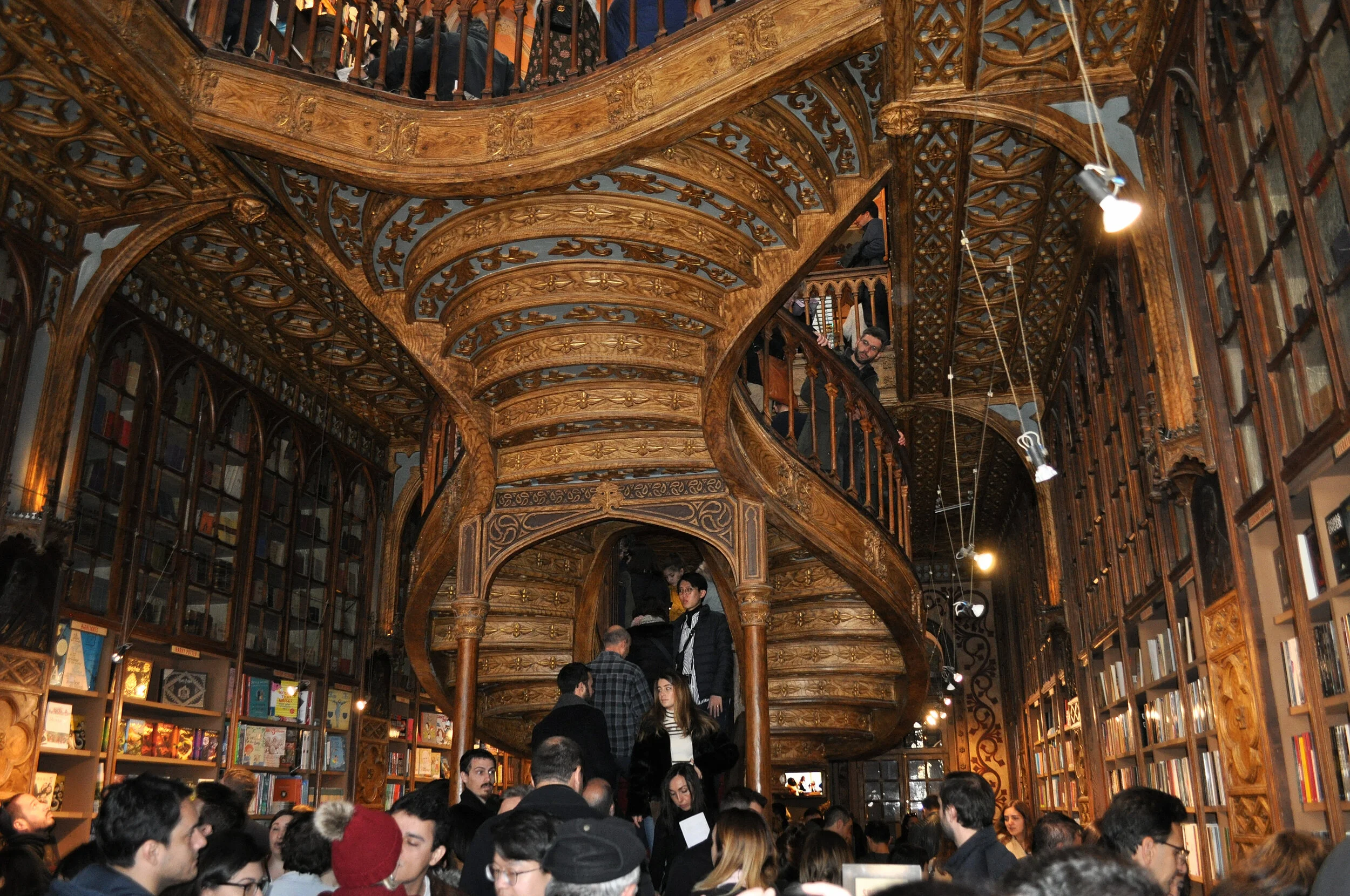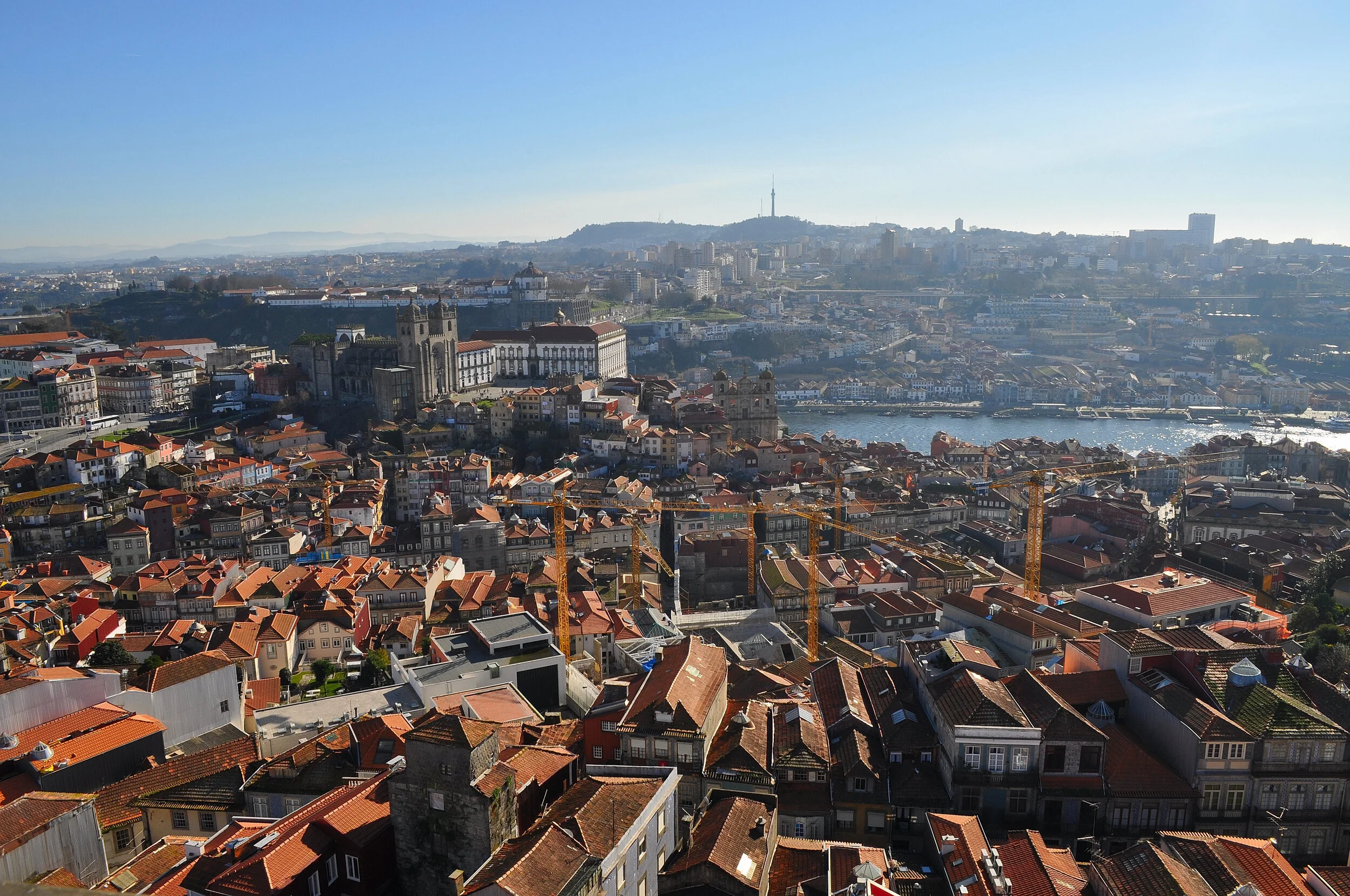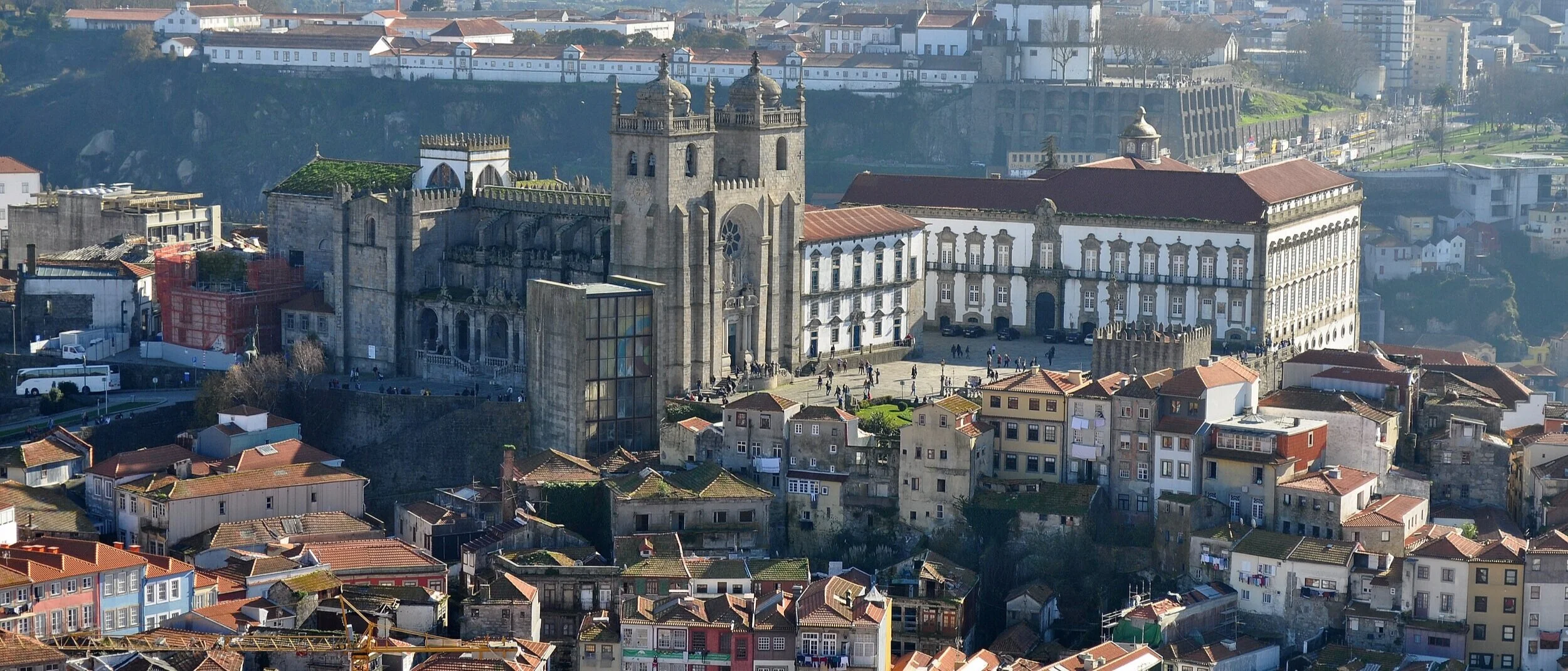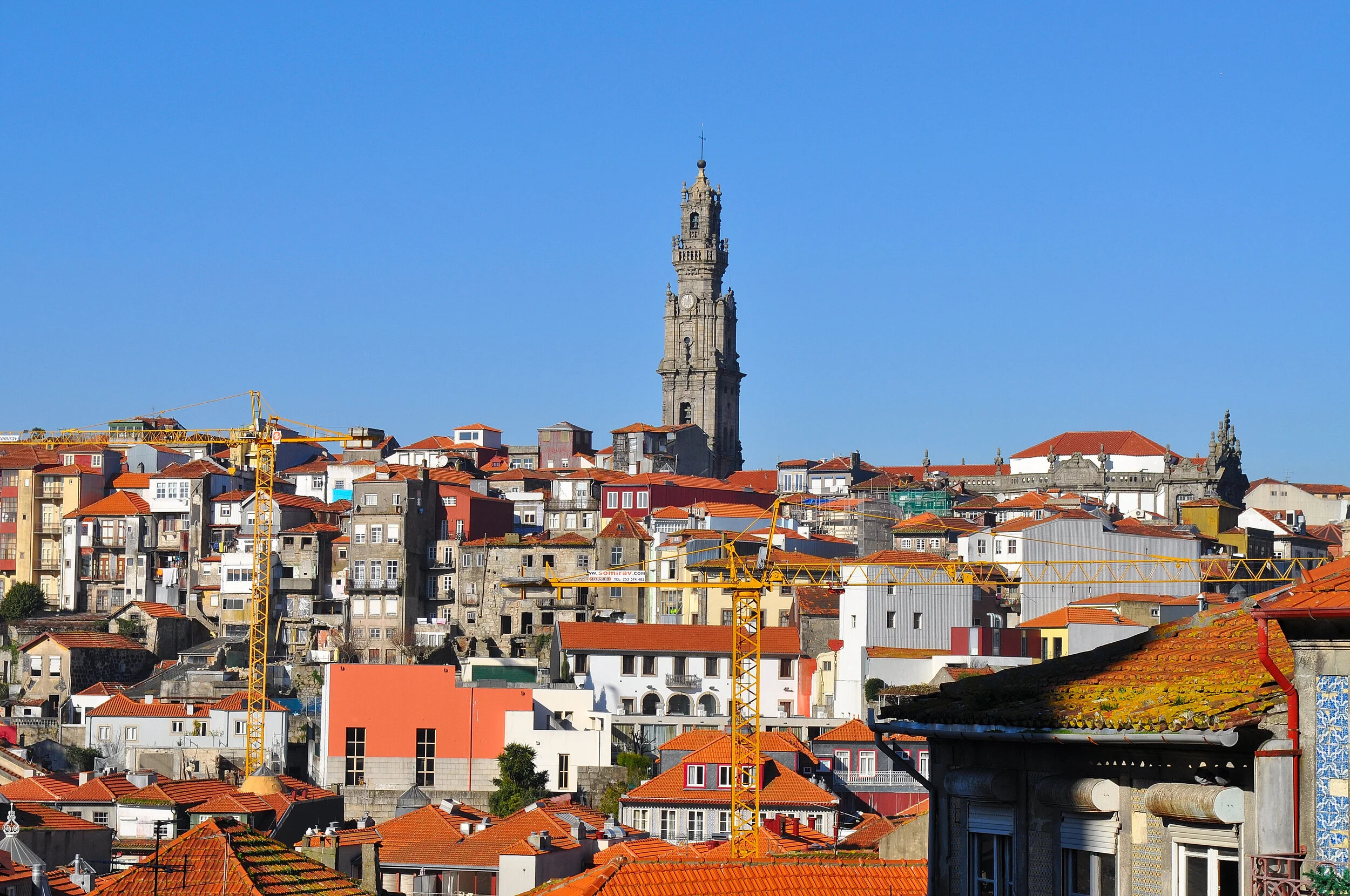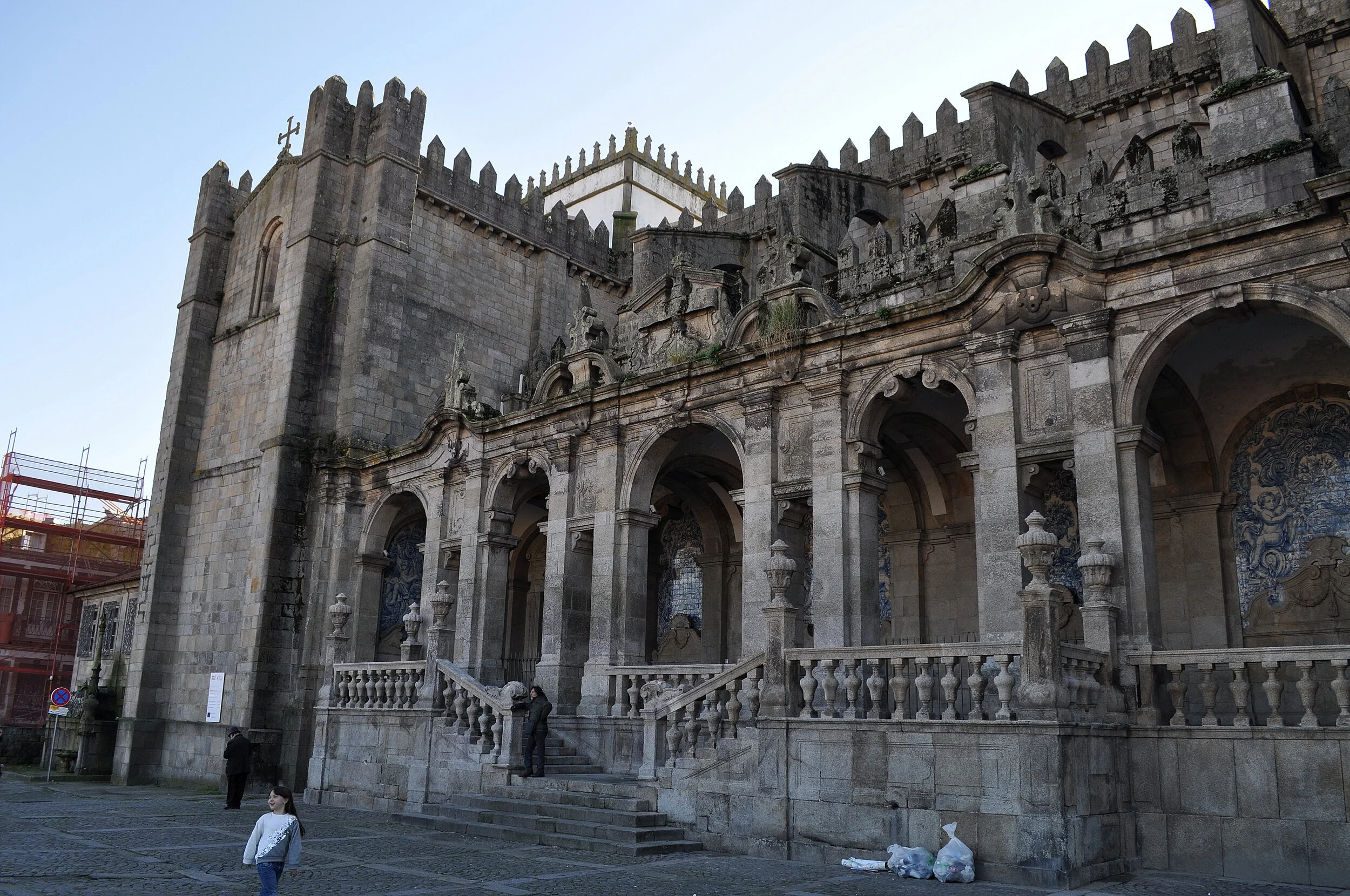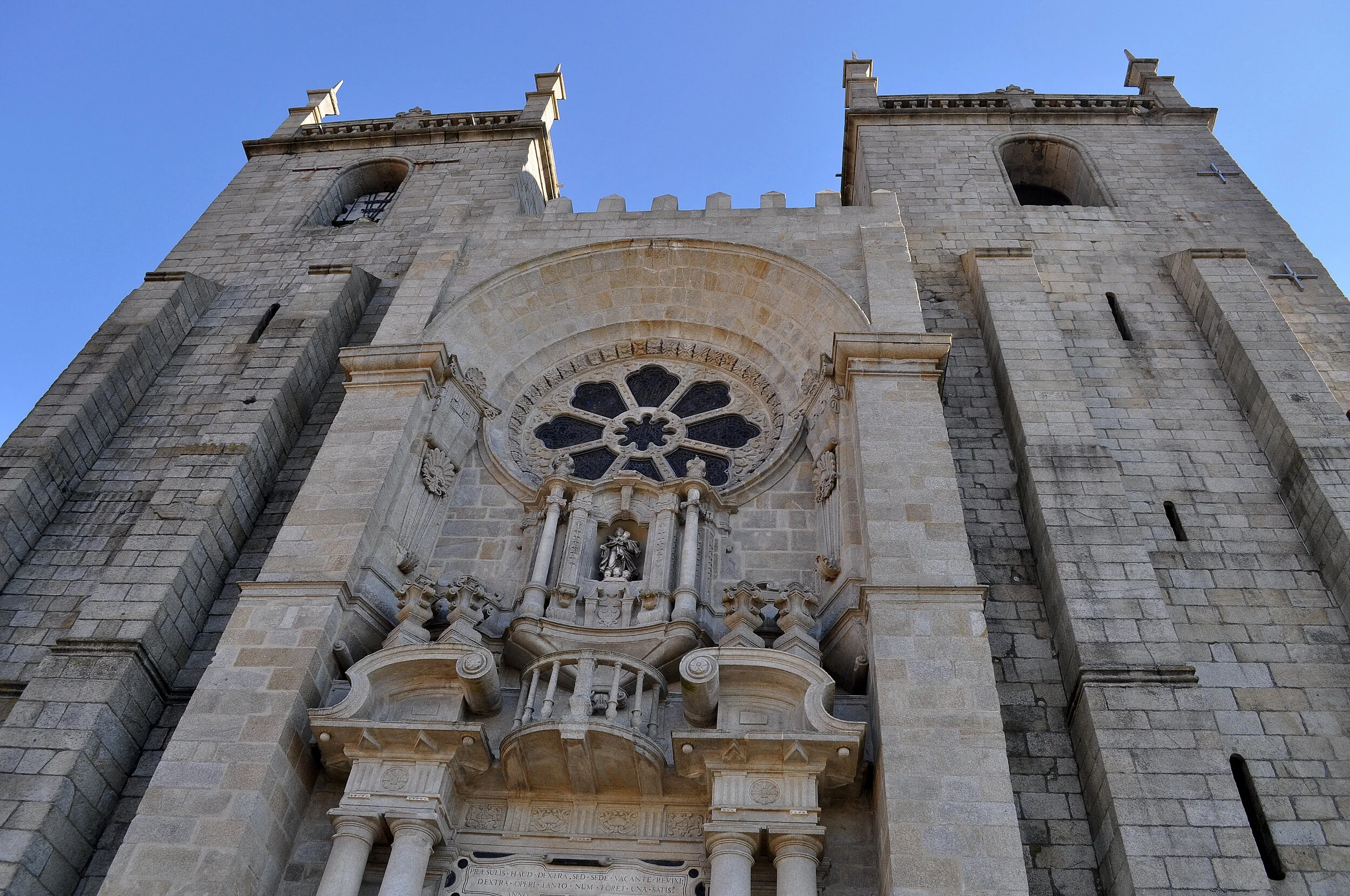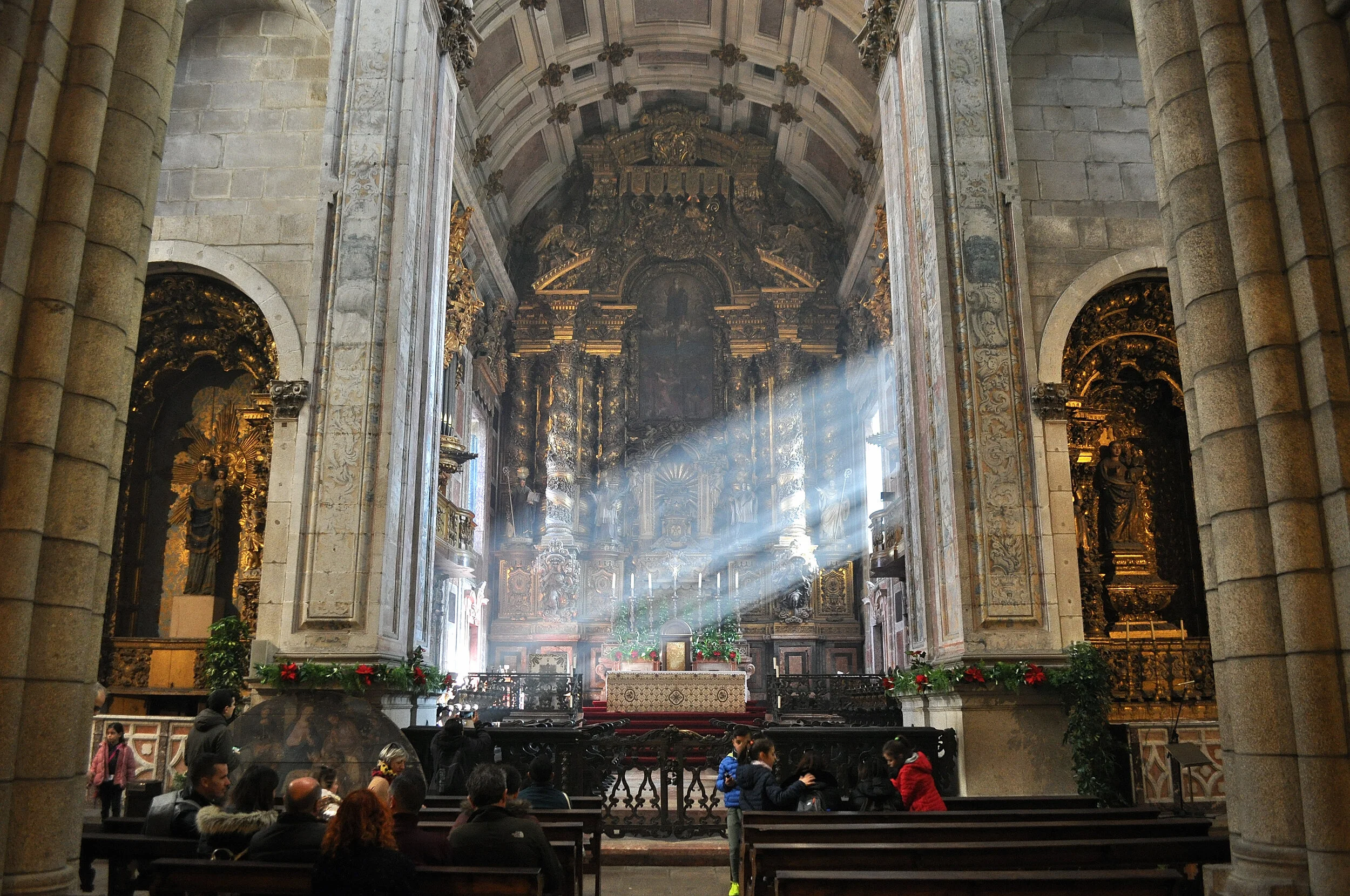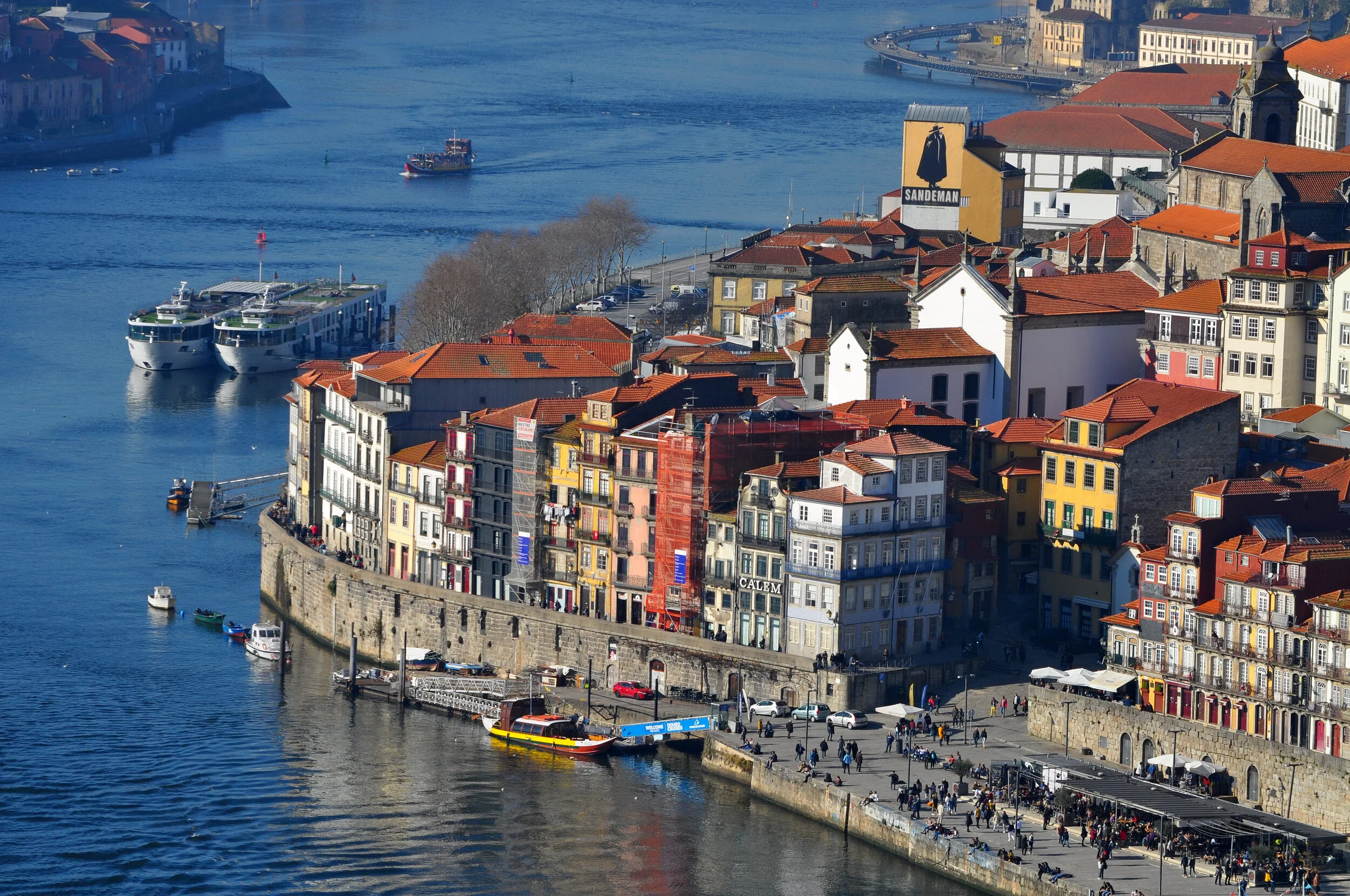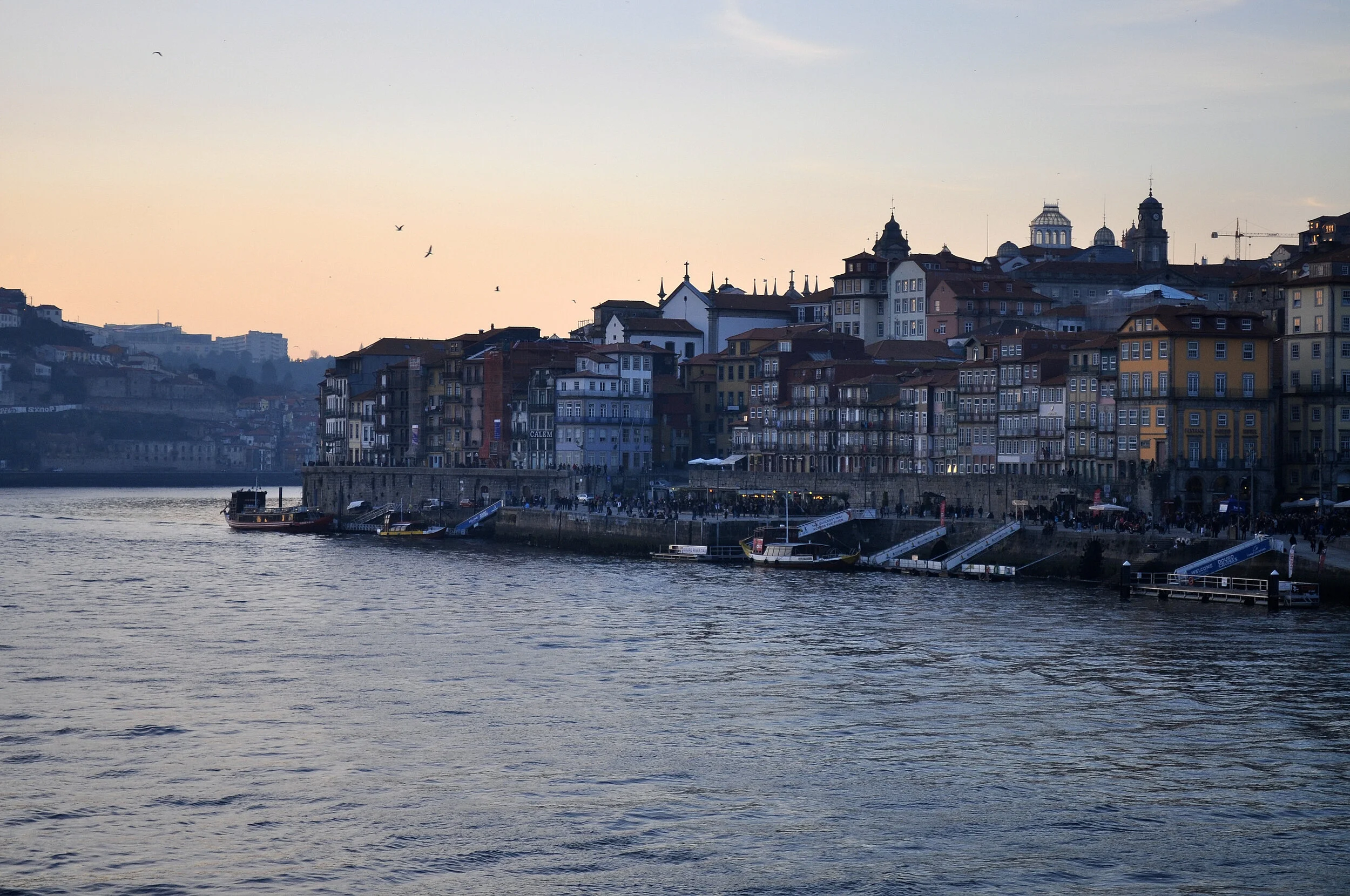Three days in Porto!
Piero: the fourth day in Porto includes a long walk around the city.
Angela: we start from the Church of Carmo; a very interesting building in baroque and rococo style, with a beautiful side façade completely covered by a panel of azulejos depicting the foundation of the Carmelite Order.
Piero: at first glance, you don’t immediately realize there is a second church next to it: the Church of Carmelitas. separating the twin churches is a building just one meter wide that used to be simply the dividing wall between Carmelite monks and nuns.
Angela: the façade is not very exciting, but the interior is truly fascinating and lavish, with carved and gilded wood decorations.
Piero: now we move a very short distance to the bookstore of the Lello & Irmao brothers, more simply known as Livraria Lello.
Angela: even if we don’t plan to buy books in Portuguese, it’s absolutely worth visiting this splendid neo-Gothic jewel, founded by the brothers who give it its name in 1906.
Piero: many rightly consider it one of the most beautiful bookstores in the world. The fame was surely boosted by the saga of the famous wizard Harry Potter.
Angela: officially, Harry Potter has nothing to do with this charming bookstore: it’s not mentioned in the books nor were any scenes of the films shot here, but popular tradition says that J. K. Rowling, during her time in Oporto as an English teacher, was inspired by the distinctive rounded staircase to start the record-breaking saga.
Piero: the visit inside is worth both the ticket price and the often long queue to enter.
Angela: besides the beauty of the books, you’re fascinated by the inlaid walls and the labyrinthine staircase: they look like wood but are actually made of concrete and painted plaster.
Piero: also wonderful is the stained-glass ceiling, bearing the inscription chosen by the Lello brothers, “Decus in labore” (“dignity in work”). Everything is exactly as it was originally!
Angela: the enchanting atmosphere of the bookstore combined with the mysterious charm of the city easily suggest that the Harry Potter saga might have found inspiration right here!
Piero: we stay nearby and head towards the Church of Dos Clérigos: a splendid example of Baroque architecture, designed by the Italian-born architect Nasoni, featuring a unique elliptical floor plan and a richly decorated façade.
Angela: it’s definitely worth visiting, with its granite and marble interiors adorned with Baroque reliefs; but what makes this building one of the most visited in Oporto is certainly the famous tower right beside it.
Piero: at 76 meters, it is the tallest tower in all of Portugal. Built from granite stone, it is one of the city’s symbols.
Angela: it’s worth climbing the 225 steps of the spiral staircase, which becomes narrower towards the top: the reward for the effort is one of the most beautiful panoramic views of the city.
Piero: once you’ve overcome the dizziness, you can take some amazing photos. Watch out for the 49 bells that ring suddenly, startling visitors!
Angela: our day ends early here: it’s time to prepare for New Year’s Eve!
Piero: finding a restaurant to book for New Year’s Eve is a truly difficult, if not impossible, task! If you want to dine out, you have to organize well in advance.
Angela: that’s not our choice because we decide to spend New Year’s Eve completely differently, without a big dinner!
Piero: we’ll make do with some street food and a good ice cream.
Angela: the beauty of New Year’s Eve comes from the squares full of people, music, colors, and joy!
Piero: close to midnight, we head to the Douro riverbanks to welcome the new year with a toast and the wonder of fireworks over the river!
Angela: our fifth day in Portugal, the first of the year, starts fairly early. The city is still asleep; workers quickly clean the traces left by the many people who welcomed the new year.
Piero: with some difficulty, we manage to have breakfast with pastéis de nata, and our tour begins again.
Angela: we decide to start at the church of São Francisco, perhaps one of the most beautiful.
Piero: from the outside, it looks like a gothic church, seemingly austere, with its entrance staircase and beautiful rose window.
Angela: inside, however, we are surprised by one of the most important examples of baroque in Portugal. All the carved wooden surfaces are covered with gold leaf (some say 100 kg of gold, others even 300 kg!); the figures of monks and cherubs, the vegetal motifs, and all the decorations shine thanks to the light filtering through the rose window.
Piero: worth admiring in the left side nave is the Tree of Jesse, a polychrome wooden sculpture representing Christ’s genealogy.
Angela: after leaving the church, we move to the adjacent palace that houses the ecclesiastical museum and, in the basement, the catacombs.
Piero: now we head towards another symbol of the city: Porto Cathedral, the Sé.
Angela: it’s located on top of a hill (more stairs!), imposing and massive, overlooking the medieval maze of narrow streets and stairways.
Piero: the exterior, with its granite facade, resembles a fortress, with tall side towers and battlements; from the forecourt you can enjoy a stunning view of the city, all the way to the Douro river.
Angela: don’t miss the cloister and the loggia, decorated with beautiful azulejos.
Piero: mid-morning, we continue our walk, approaching the Dom Luís I Bridge, which we will cross to reach Vila Nova de Gaia.
Angela: the bridge is another city symbol: one of the many so-called “Eiffel” bridges found in Portugal.
Piero: indeed, its iron structure and architecture recall the typical designs of the French engineer. Actually, this bridge was designed by one of his collaborators and pupils, the Belgian Seyrig.
Angela: its structure consists of an iron arch and, at the top and base, two linear structures for traffic; the upper level today is used exclusively by the city’s metro tram trains and pedestrians.
Piero: it is almost 400 meters long and 45 meters high. Walking along the pedestrian path at the top, you get a fantastic panoramic view of the city and the Douro River. That’s the route we choose to cross.
Angela: after crossing the bridge, not without taking some photos, we arrive in Vila Nova de Gaia; this neighborhood is famous for one of the city’s typical products: Port wine.
Piero: back in the 17th century, English merchants added a small amount of brandy to the local wine, creating the famous fortified nectar.
Angela: on this side, the Douro riverbank is dotted with ancient cellars offering tours and tastings.
Piero: we reach the neighborhood from the hill after crossing the bridge at the top; the Serra do Pilar monastery immediately attracts us; from its front terrace, we admire the Jardim do Morro with its palm trees.
Angela: we decide to walk down to the riverbank through the typical streets and stairways. Alternatively, you can use the Gaia Cable Car, the funicular that connects the bridge’s top with the riverbank.
Piero: for lunch, we stop at one of the many available restaurants and decide to try the famous francesinhas, the typical sandwich filled with meat and covered with fried egg and cheese: a bomb!
Angela: now we relax with a beautiful walk along the riverbank. Time seems to have stopped: on one side, the cellars look just like they used to, and on the river, the stunning, traditional boats for transporting wine are moored.
Piero: now we start heading back and decide to cross the bridge at the bottom this time: less charming but more practical.
Angela: we reach the Ribeira district, practically the city’s iconic postcard, a UNESCO World Heritage site.
Piero: this area, especially seen at sunset, stays in the heart: the houses leaning against each other look like an artist’s palette with their charming pastel colors; the medieval alleys winding toward the river seem like a labyrinth; and finally, the tascas, the riverside taverns.
Angela: don’t miss trying a small glass of Port wine or ginja (the delicious cherry liqueur more typical of Lisbon than Porto, but who cares…) served in a chocolate cup, to eat after drinking: a real delight!
Piero: at this point, we head back, with legs definitely wobbly from the tiredness of long walks but also from the two, three, maybe four little glasses in Ribeira…
Angela: for dinner, we try one of the tascas we saw in the afternoon, Taberna d’Avo, to taste two typical specialties, petiscos (the tapas) and bacalhau (salted cod).
Piero: that’s the end of another wonderful day.
Angela: unfortunately, the last day is the day of departure.
Piero: since our flight is early afternoon, we still have time for a surprise for our kids: a visit to the brand-new Do Dragão stadium.
Angela: we visit the locker rooms, stands, field, benches, and the museum; after buying a few souvenirs, it’s already time to head to the airport.
Piero: Portugal is a wonderful land! Every corner we visited, every flavor, every color stayed in our hearts.
Angela: obviously, with the time available, we couldn’t see everything; no worries though: it just means we’ll come back soon! Obrigado!!!

